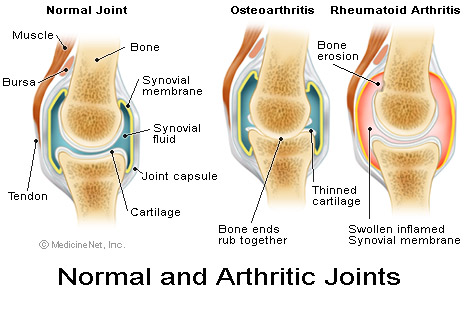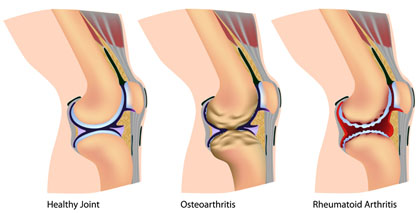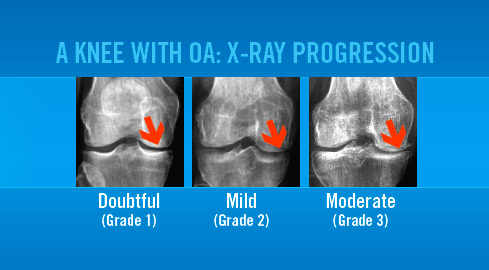Training Considerations
For the purposes of Steve’s question, we’ll agree to limit this to discussion to those diagnosed with osteoarthritis as opposed to rheumatoid, psoriatic or about 100 different types of arthritis.
Number one consideration: Principle of individuality. This foundation of training states that every person is different and every situation is different and the treatment plan/resistance training program should be personally tailored for each individual. Caveat #1: There is no correct exercise; Only the right exercise for the right person at the right time. Caveat #2: It's difficult to give specific recommendations without hands on evaluation so have come up with some general recommendations for people diagnosed with arthritis.
1. Stick the adage, “No Pain, No Gain (for anything)” where it belongs. Instead substitute, “Where there is pain, there is no gain.” One may also find it useful to maintain a training journal in order to track if any exercise particularly irritates the knee joint. In particular, replace any exercise that results in pain two hours after exercising. Finally, it’s also important to differentiate between normal soreness and pain following exercising.
2. Additional considerations: Is the issue bilateral or unilateral? Is the affected area in a weight or non-weight bearing area of the knee? Are there any other joints involved starting with the big toe to the hip or above. Has the brain developed (most likely) any compensatory patterns to allow the body to complete desired tasks (especially for unilateral issues).
3. Major training objectives:
a) Strengthening muscles around the knee joint, in particular the quadriceps muscles that are responsible for knee flexion and ability to stand. The idea is that keeping the muscle strong provides more stability to the joint and hence, relieves forces and stresses on the bone;
b) Maintaining joint mobility/ROM and stability of joints above (hip) and below (ankle) knee joint. The better the hip and ankles move, the less the knee joint has to do;
c) Maintaining/improving increasing aerobic capacity;
d) Improving mood and sense of well-being;
e) Release of endorphins to relieve pain, anxiety and depression.
Key point to remember is that mobility before stability (static and dynamic) before movement. This is in part because stability is a neuromuscular function and want as wide a range of motion before training stability.
4. Number one thing to remember is to find pain-free range of motion.
5. Days of heavy weights are over. As far as training frequency goes, remember that like drugs, just because a little bit is good doesn’t make more better (unless you’re a BB taking steroids nowadays it seems).
As a whole, the lower body program (arthritic knees for instance don’t preclude one lifting heavy for the upper body) should emphasize higher repetitions/greater volume (working more Type 1/stabilizing muscle groups) and less weight/decreased intensity. One may also want to emphasize exercises like a leg press that distributes the resistance torque over several joints (hips, knees, ankles) rather than say knee extensions where the whole resistance torque rests on the knee. (an open chain kinetic exercise like the knee extension may cause more stress to the knee because of the gliding action).
If the condition is severe enough, may want to limit the number of exercises peformed as well as eliminating those involving bending of the knee. Instead, build a program around straight leg raises, lying hip abduction and adduction, etc.
6. Eccentric training. This type of training that involves emphasizing the lower part of the lifting motion and is very valuable in terms of providing strength gains as well as being particularly joint kind (for a number of reasons that are beyond the scope of the present discussion). For instance if using a leg press or knee extension machine, and in a situation where there is unilateral involvement of the knee joint, one can use a slightly heavier weight and lift with two legs and lower with one. Or if say doing leg raises, lower the leg to a count of five instead of just dropping the leg like a rock.
.
7. Core training. Remember that one of the primary functions of the trunk/core is to provide stability so that our limbs can move properly. Many people neglect this aspect as it isn’t sexy and take some effort. But this effort is well rewarded.
8. Foam Rolling/Self Myofascial Release (SMR) Should be used by anyone exercising, whether runner or weightlifter! Akin to soft tissue work/massage, SMR is used to break up intramuscular and muscular/connective tissue adhesions that affect joint centration. Various tools, depending upon the ultimate goal, can be used to perform SMR including foam rollers, sticks, medicine balls, softballs, lacrosse balls, etc.
9. Common sense suggestions following exercise/working out, etc., rest, ice, elevation and compression following exercise. One common procedure used for icing is 15 minutes on/15 minutes off for 2-3 cycles.
10. Various tools available in the gym and at home including ankle weights, minibands, resistance bands, weights, machines. (source: www.performbetter.com)
11. Adopt a diet that is rich in anti-inflammatory diet rich in fruits and vegetables and omega-3 free fatty acids like fish oil.




